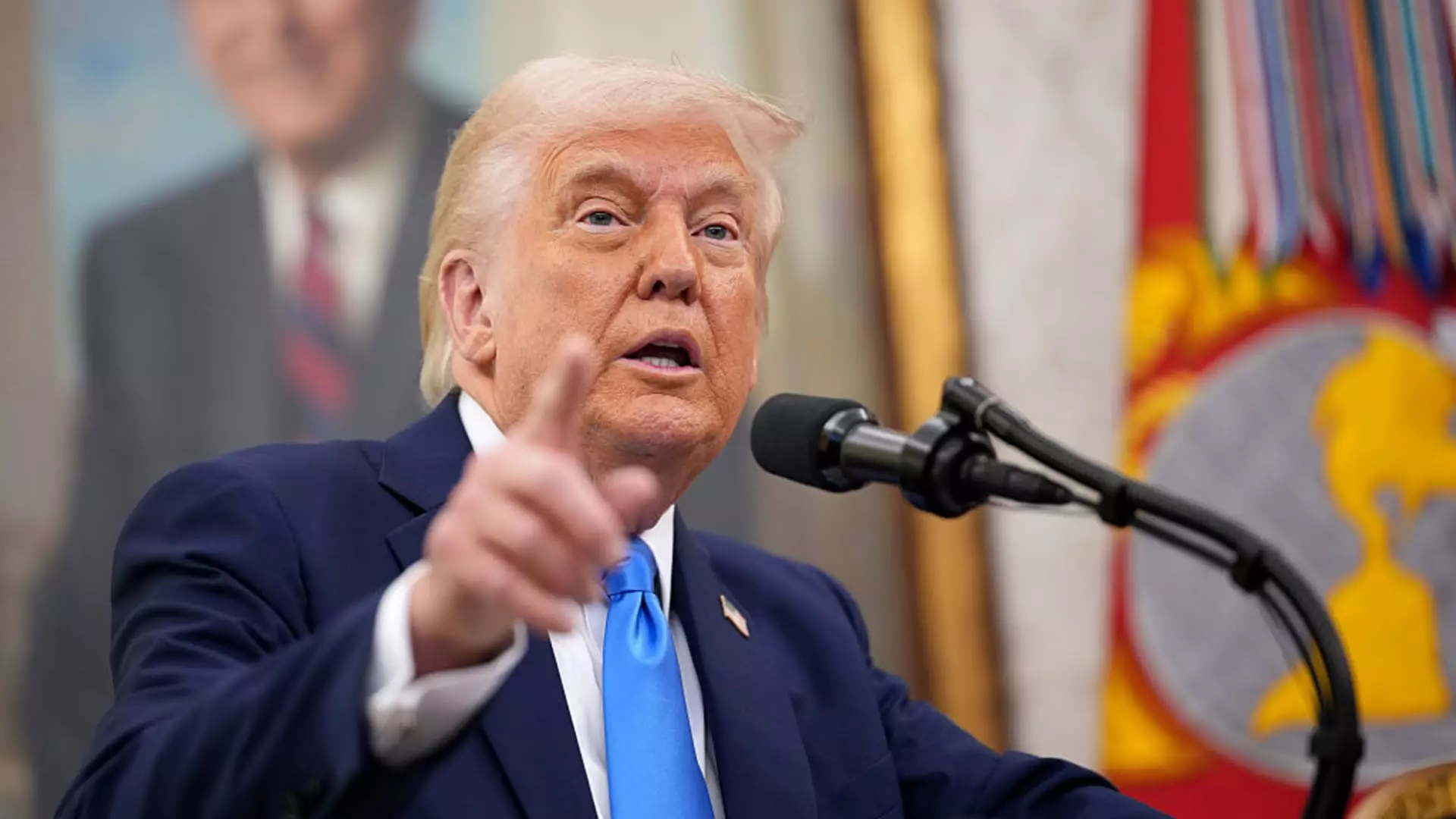As President Donald Trump prepares to unveil his most ambitious round of tariffs, there is an overwhelming sense of trepidation among economists, policymakers, and international trade partners alike. Trump has painted this move as a moment of national rebirth, an “America’s liberation day” that promises to rectify long-standing trade imbalances. However, beneath this grandiose propaganda lies a chaotic strategy fraught with potential repercussions that could inflict more harm than good.
The concept of “reciprocal tariffs” is fundamentally based on retaliatory measures against nations considered to have unfair trade practices. However, Trump’s definitions of fairness and scrutiny lack precision, creating anxiety and uncertainty in global markets. Essential questions remain unanswered: which countries will be targeted, what criteria will be applied, and what tariff rates will be enforced? The ambiguity surrounding these tariffs only exacerbates the strain on international relationships that Trump purports to bolster.
The Overlooked Economic Damage
The economic rationale behind imposing tariffs has been portrayed as an effort to bolster American manufacturing and reduce trade deficits. Yet, many economists argue that imposing heavy tariffs is a double-edged sword. While the administration seeks to punish nations for their trade practices, these measures will invariably raise prices for American consumers. Increased costs mean reduced spending power, ultimately harming domestic demand for various goods and services. As much as Trump argues that he aims to protect American interests, the reality is that his approach will likely hinder the very economy he seeks to uplift.
Moreover, Trump’s reference to the “Dirty 15” – a cryptic label for the nations responsible for a majority of the U.S. trade deficit – contributes to the confusion and further stigmatizes countries without offering tangible strategies. Many experts advocate for a more nuanced approach that engages in dialogue rather than declaring a cold war on global commerce. Isolating the U.S. may give the illusion of strengthening its economic position, yet it risks alienating key partners who could be allies in addressing genuine trade issues.
Shifting Agendas Amid Confusion
According to Kevin Hassett, Trump’s economic advisor, a focus on just 10 to 15 countries is the preferred strategy for tackling the trillion-dollar trade deficit. Yet, Trump’s remarks negate this approach, stating that tariffs would apply across the board. This dissonance reflects a lack of cohesive economic strategy that should be fundamental prior to such drastic implementations. The mixed messages from those within the administration create an impression of incompetence—a perception that could destabilize investor confidence.
The trepidation extends beyond borders. Uncertainty breeds hesitance among international partners that could be vital in shaping a cooperative trading environment. Nations typically respond to tariffs with their own retaliatory measures, setting off a cyclical trade war that could see prices soar and supply chains disrupted. Instead of fostering a productive dialogue aimed at achieving equitable trade solutions, Trump’s approach risks inciting widespread economic chaos.
The Cost of Nationalism
In the broader context, Trump’s tariff strategy mirrors a nationalist policy approach that prioritizes American interests above all else, often at the expense of the global community. This disregard for interdependence in the global economy disregards how deeply connected products, services, and markets are today. Tariffs could encourage a protectionist mindset fraught with severe economic consequences not just for trading partners, but for American consumers and businesses as well.
Center-wing liberalism posits that engaging in constructive dialogue and cooperative approaches will yield better long-term results than the belligerent tactics employed by Trump’s administration. Economic well-being does not exist within a vacuum. Collaboration and mutual benefit should guide trade routes, rather than antagonism and isolation.
Trump’s tariff agenda embodies a potentially destructive economic experiment. The ramifications it carries threaten to upend not just trade, but the relationships upon which global economies are built. Instead of pursuing aggressive enforcement tactics, utilizing diplomacy and collaboration could lead to a robust and fair trade environment, ensuring that the real benefits flow down to American workers and consumers alike.


Leave a Reply